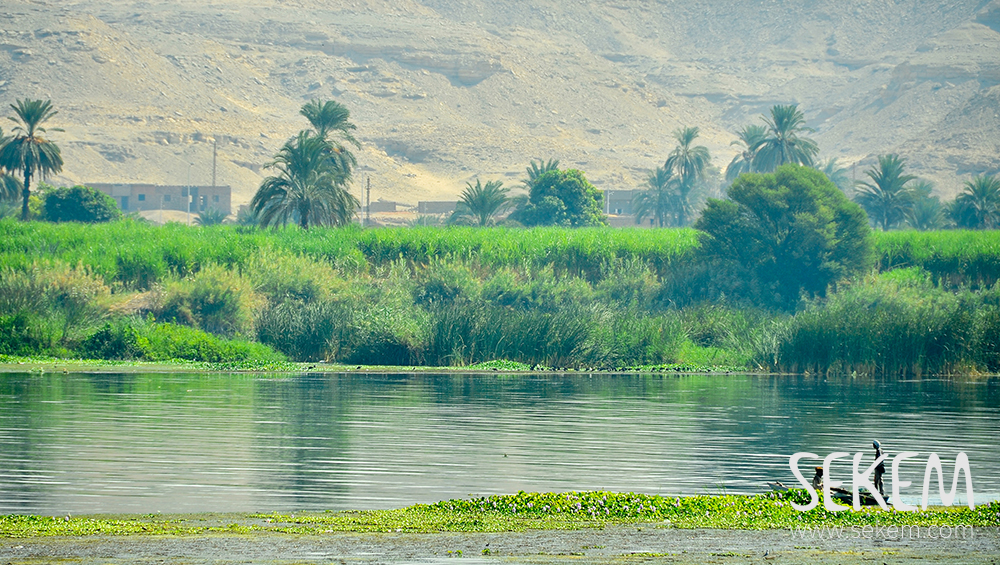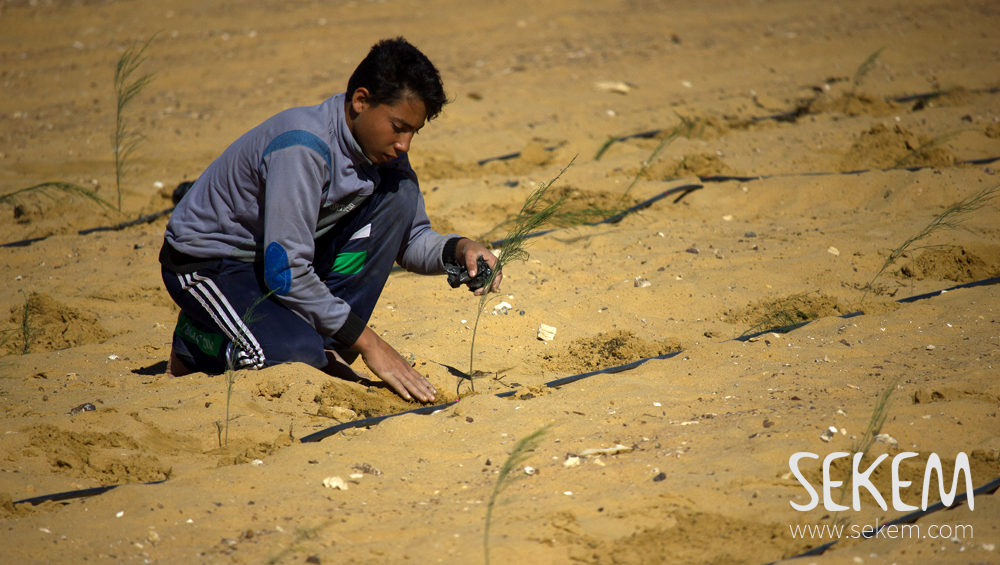Series on how SEKEM tries to combat desertification in the four dimensions of Sustainable Development.
In the widely known story of The Little Prince, written by Antoine de Saint-Exupéry, the narrator’s plane crashes in the middle of the Sahara, far away from civilization. He might be landed in Egypt – the possibility to touch down in the desert while flying over the Egyptian country is most probably. In fact, more than 90% of Egypt is desert land. The only natural fertile soil is located along the River Nile, which runs from the south to the north, where entering the Mediterranean Sea.
People are gathering along the precious water in the Nile Valley and Delta, which is known as the most extensive oasis on earth and covers only 6% of the Egyptian country. Around 50 years ago, when the population counted around 30 million, living in a desert land was already a challenge. Today the number tripled, but the cultivated area remained the same. Additionally, the climate change and missing awareness about the consequences of actions, such as unsustainable agriculture, wrong garbage disposal, wasting of water or financing short-term solutions, led to further desertification.

Water – the Egyptian gold
Egypt is heading towards becoming more and more a desert. The most precious Nile Delta risks salinization caused by the sea level rising. The Nile constantly looses water so that it’s natural pressure is vanishing the sea more and more. The country suffers from water scarcity and is already below the United Nations’ water poverty threshold (1,000 cubic meters of water per person per year). The annual water supply in Egypt dropped from more than 2,500 cubic metres in 1947 to an average of 660 cubic metres per person in 2013. It is predicted that by 2025 the state could totally run out of water.
Egyptians are not suffering from being thirsty, but face the problem of not having enough food. Agriculture alone requires 85% of the 68 billion cubic meters of water that is available in Egypt each year. As the country is relying on artificial irrigation as rainfalls are very rare, water scarcity is becoming an overall danger. Egypt is depending on food imports, which causes higher food prices and thereby leads to poverty. Wheat production alone, for instance, would require a quarter of Egypt’s total water supply.
Besides the lack of water, the Nile, Egypt’s only reliable source for life, is going to be more and more polluted by immense waste and agro-chemicals, which are used to grow crops as fast as possible but do in fact constantly ruin the land. A cycle of short-term solutions that lead from bad to worse.
Missing land and its impacts to society, economy and cultural life
Similar connections can be found when it comes to the impacts desertification has to society. The unemployment rate reached over 13% by the end of 2015. Two out of every three young Egyptians aged between 20 to 34 years don’t have a job. 29% of the working population are employed in the agricultural sector that composes only 13% of Egypt’s GDP. An average of 25% of Egyptians live below the national poverty line.

Poverty and income disparities also put pressure on the economic and political situation. The current education system does not even meet basic needs. 25% of the population is still illiterate. It’s hardly surprising when only 3.8% of the GDP is spent for education. Hence, classes are overloaded and underpaid teachers feeling forced to earn money by giving private lessons. An unfair and dangerous development for the future of the country’s cultural life.
Egypt’s desert is growing. Land is degraded by the missing water resources, pollution and climate change. This leads to rising food prices, poverty and migration. Economical and societal challenges cause immense lacks in the educational systems, the basis for all future development. Not only the visible desert seems to be dry and arid land; it appears to be a synonymous for the whole situation of the country.
Every desert hides a well
But: “What makes the desert beautiful is that somewhere it hides a well”, the Little Prince in the same-titled book says. And, yes, there are wells, even in Egypt. They just need to be found and their precious water needs to be used carefully and with the proper awareness so that the Egyptian desert can be greened again.

SEKEM Initiative tries to be one of these wells, not only by directly watering the dry desert land in a sustainable and conscious way, but in the same time by fostering a fair economy, a balanced societal life build on a cultural basis that reflects human dignity. Because: If Egypt would become completely desert land, people would not have food, they would become sick, societal commotions would arise and finally life would disappear.
Christine Arlt
Read more about how SEKEM tries to combat Egypt’s desertification in:
Ecology
Cultural Life
Societal Life
Economy

